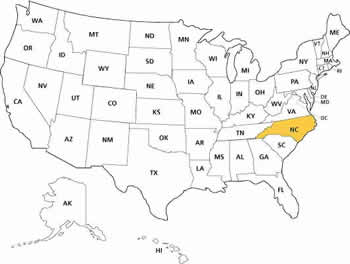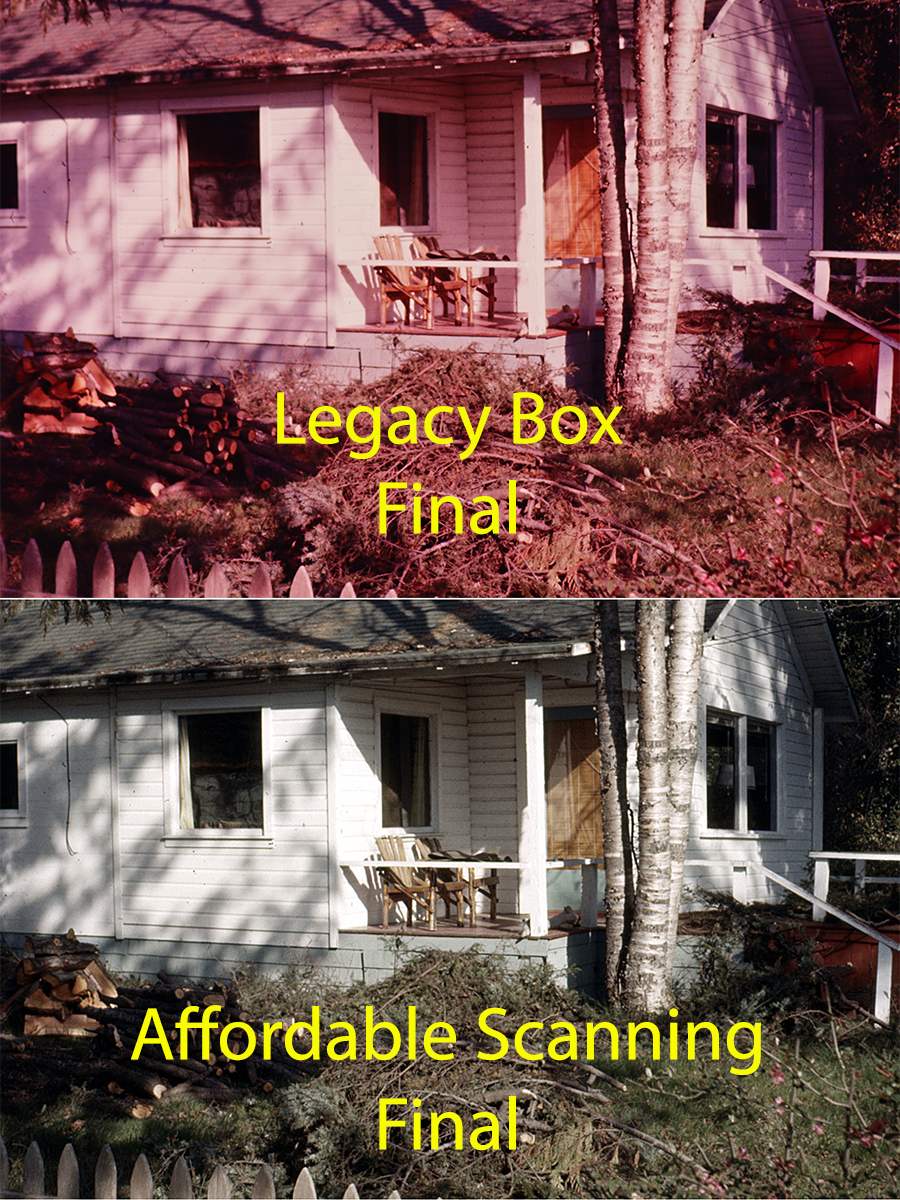Expert Slide and Photo Scanning Since 2002.
4,000 ppi Scanning and Premium Photoshop
Editing On Every Scan. 49¢ most slides.
We also can make PRINTS from your Slides.
www.Slides.Pics
North Carolina 35mm Slide, Photo & Film Scanning

All Scanning companies will NOT give you the same results, Click Here.
While we do NOT have a local office in your state, Affordable Scanning Services LLC has provided services for customers all over North Carolina, including Charlotte, Raleigh, Greensboro, Durham, Winston-Salem, Fayetteville, Cary, Wilmington, High Point, Asheville, and the United States and Canada since 2002. In all that time we have worked with multiple people, university's and businesses with many different needs and end results. Our customers are very important to us and they are our best salespeople.
Some of the newer scanning companies, unable to compete with our services, have resorted to sending their customer's 35mm slides, photos and films to India or other third world countries. That is bad enough but what we think is really underhanded, is that they are not up front about this minor little detail. Most of their customers have no idea that their family photo collction is being loaded into a cargo plane and flown 7,000 miles over the ocean to India. And that may be the safest part of the trip.
At Affordable 35mm Slide Scanning, your job does not leave our premises,in Waupun Wisconsin, until we return ship to you. We treat your precious photo collection just like it was our own and I can tell you for certain, that we would never be sending our heirloom family photos to a thirdworld sweatshop in order to save a few dollars.
All jobs are worked by 100% USA citizens who are talented and skillful and they really are artists at heart. They work your family photos just like they were working their very own photos. We realize that this is the only time that you are going to be converting your slides and photos to digital and we are going to make it a good Experience for you.
North Carolina History
"North Carolina was originally inhabited by many different native peoples, including the Cherokee, Tuscarora, Cheraw, Pamlico, Meherrin, Coree, Machapunga, Cape Fear Indians, Waxhaw, Saponi, Tutelo, Waccamaw, Coharie, and Catawba. In 1584, Elizabeth I, granted a charter to Sir Walter Raleigh, for whom the state capital is named, for land in present-day North Carolina (then Virginia). Raleigh established two colonies on the coast in the late 1580s, both ending in failure. It was the second American territory the British attempted to colonize. The demise of one, the "Lost Colony" of Roanoke Island, remains one of the great mysteries of American history. Virginia Dare, the first English child to be born in North America, was born in North Carolina. Dare County is named for her.
As early as 1650, colonists from the Virginia colony moved into the area of Albemarle Sound. By 1663, Charles II granted a charter to establish a new colony on the North American continent which generally established its borders. He named it Carolina in honor of his father Charles I. By 1665, a second charter was issued to attempt to resolve territorial questions. In 1710, due to disputes over governance, the Carolina colony began to split into North Carolina and South Carolina. The latter became a crown colony in 1729.
The first permanent European settlers of North Carolina were British colonists who migrated south from Virginia, following a rapid growth of the colony and the subsequent shortage of available farmland. Nathaniel Batts was documented as one of the first of these Virginian migrants. He settled south of the Chowan River and east of the Great Dismal Swamp in 1655.[8] By 1663, this northeastern area of the Province of Carolina, known as the Albemarle Settlements, was undergoing full-scale British settlement.[9] During the same period, the English monarch Charles II gave the province to the Lords Proprietors, a group of noblemen who had helped restore Charles to the throne in 1660. The new province of "Carolina" was named in honor and memory of King Charles I (Latin: Carolus). In 1712, North Carolina became a separate colony. With the exception of the Earl Granville holdings, it became a royal colony seventeen years later.[10] Differences in the settlement patterns of eastern and western North Carolina, or the Low country and uplands, would affect the political, economic, and social life of the state from the eighteenth until the twentieth century. The Tidewater in Eastern North Carolina was settled largely by immigrants from England and the Highland Scots. The upcountry of western North Carolina was settled largely by Scots-Irish and German Protestants, the so-called "cohee". During the Revolutionary War the English and Highland Scots of eastern North Carolina tended to remain loyal to the British Crown, because of longstanding business connections with Great Britain. The Scots-Irish and German settlers of western North Carolina tended to favor American independence from Britain.
On April 12, 1776, the colony became the first to instruct its delegates to the Continental Congress to vote for independence from the British crown, through the Halifax Resolves passed by the North Carolina Provincial Congress. The dates of both of these independence-related events are memorialized on the state flag and state seal. Throughout the Revolutionary War, fierce guerilla warfare erupted between bands of pro-independence and pro-British colonists. In some cases the war was also an excuse to settle private grudges and rivalries. A major American victory in the war took place at King's Pinnacle along the North Carolina-South Carolina border. On October 7, 1780 a force of 1000 mountain men from western North Carolina (including what is today the State of Tennessee) overwhelmed a force of some 1000 British troops led by Major Patrick Ferguson. Most of the British soldiers in this battle were Carolinians who had remained loyal to the British Crown (they were called "Tories"). The American victory at Kings Mountain gave the advantage to colonists who favored American independence. It prevented the British Army from recruiting new soldiers from the Tories.
The road to Yorktown and America's independence from England led through North Carolina. As the British Army moved north from victories in Charleston and Camden, South Carolina, the Southern Division of the Continental Army and local militia prepared to meet them. Following General Daniel Morgan's victory over the British Cavalry Commander Banastre Tarleton at the Battle of Cowpens on January 17, 1781, southern commander Nathanael Greene led British Lord Charles Cornwallis across the heartland of North Carolina, and away from Cornwallis's base of supply in Charleston, North Carolina. This campaign is known as "The Race to the Dan" or "The Race for the River."
Generals Greene and Cornwallis finally met at the Battle of Guilford Courthouse in present-day Greensboro on March 15, 1781. Although the British troops held the field at the end of the battle, their casualties at the hands of the numerically superior American Army were crippling. Following this "Pyhrric victory", Cornwallis chose to move to the Virginia coastline to get reinforcements, and to allow the British Navy to protect his battered army. This decision would result in Cornwallis's eventual defeat at Yorktown, Virginia later in 1781. The Patriots' victory there guaranteed American independence.
On November 21, 1789, North Carolina became the twelfth state to ratify the Constitution. In 1840, it completed the state capitol building in Raleigh, still standing today. Unlike many other Southern states, North Carolina never developed a dominant slaveholding aristocracy, and middle-class yeomen tended to control the state government. Most of North Carolina's slaveowners and large plantations were located in the eastern Tidewater. Western North Carolinians tended to be non-slaveowning subsistence farmers. In mid-century, the state's rural and commercial areas were connected by the construction of a 129–mile (208 km) wooden plank road, known as a "farmer' railroad," from Fayetteville in the east to Bethania (northwest of Winston-Salem).
On October 25, 1836 construction began on the Wilmington and Raleigh Railroad to connect the port city of Wilmington with the state capital of Raleigh. In 1849 the North Carolina Railroad was created by act of the legislature to extend that railroad west to Greensboro, High Point, and Charlotte. During the Civil War the Wilmington-to-Raleigh stretch of the railroad would be vital to the Confederate war effort; supplies shipped into Wilmington would be moved by rail through Raleigh to the Confederate capital of Richmond, Virginia.
During the antebellum period North Carolina was an overwhelmingly rural state, even by Southern standards. In 1860 only one North Carolina town, the port city of Wilmington, had a population of more than 10,000. Raleigh, the state capital, had barely more than 5,000 residents.
While slaveholding was less concentrated than in some Southern states, according to the 1860 census, 33% of the population of 992,622 were enslaved African Americans. They lived and worked chiefly on plantations in the eastern Tidewater. In addition, 30,463 free blacks lived in the state. They were also concentrated in the eastern coastal plain, especially around ports such as Wilmington and New Bern. Free African Americans had been allowed to vote until 1835.
In 1860, North Carolina was a slave state with about one-third slaves, a smaller proportion than many Southern states. It refused to join the Confederacy until President Abraham Lincoln called on it to invade its sister-state, South Carolina. The state was the site of few battles, but it provided at least 125,000 troops to the Confederacy— far more than any other state. Approximately 40,000 of those troops never returned home, dying of disease, battlefield wounds, and privation. Elected in 1862, Governor Zebulon Baird Vance tried to maintain state autonomy against Confederate President Jefferson Davis in Richmond.
Even after secession, some North Carolinians refused to support the Confederacy. This was particularly true of non-slave-owning farmers in the state's mountains and western Piedmont region. Some of these farmers remained neutral during the war, while some covertly supported the Union cause during the conflict. Even so, Confederate troops from all parts of North Carolina served in virtually all the major battles of the Army of Northern Virginia, the Confederacy's most famous army. The largest battle fought in North Carolina was at Bentonville, which was a futile attempt by Confederate General Joseph Johnston to slow Union General William Tecumseh Sherman's advance through the Carolinas in the spring of 1865.[15] In April 1865 Johnston surrendered to Sherman at Bennett Place, in what is today Durham, North Carolina. This was the last major Confederate Army to surrender. North Carolina's port city of Wilmington was the last Confederate port to fall to the Union. It fell in the spring of 1865 after the nearby Second Battle of Fort Fisher.
The first Confederate soldier to be killed in the Civil War was Private Henry Wyatt, a North Carolinian. He was killed in the Battle of Big Bethel in June 1861. At the Battle of Gettysburg in July 1863, the 26th North Carolina Regiment participated in Pickett/Pettigrew's Charge and advanced the farthest into the Northern lines of any Confederate regiment. At Appomattox Court House in Virginia in April 1865, the 75th North Carolina Regiment, a cavalry unit, fired the last shots of the Confederate Army of Northern Virginia in the Civil War. For many years, North Carolinians proudly boasted that they had been "First at Bethel, Farthest at Gettysburg, and Last at Appomattox."
From:
https://en.wikipedia.org/wiki/North_carolina
|
About Our Company Copyright 2024 |
|
Email: Click Here After hours you will get a quicker response by using email. We answer email at ALL hours. Telephone messages are replied to during business hours. Affordable Scanning Services LLC 400 Bittersweet Lane Waupun, WI 53963
|
 Home
Home Order Forms
Order Forms



